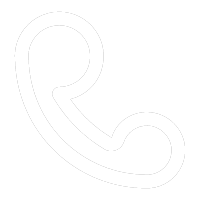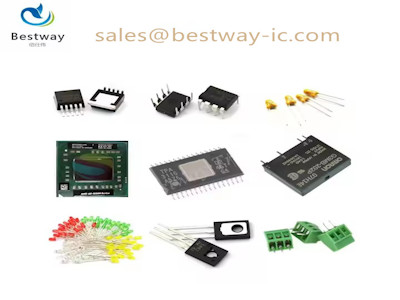В современном мире дизайн и технологии неразрывно связаны, и LED-освещение стало настоящим прорывом, способным преобразить любое пространство. От умных домов до архитектурных шедевров, LED-технологии предлагают не только энергоэффективность, но и бесконечные возможности для творчества. В этой статье мы погрузимся в будущее LED, исследуя, как эти инновации могут стать центральным элементом вашего дизайна, принося эстетику, функциональность и устойчивость.
Введение в мир LED: От простого света к революции
LED (Light Emitting Diode) технологии появились decades назад, но только в последние годы они достигли такого уровня развития, что стали незаменимыми в дизайне. Изначально используемые в indicator lights, сегодня LED-лампы и панели способны создавать целые атмосферы, от уютного домашнего освещения до динамичных городских инсталляций. Их преимущества включают низкое энергопотребление, долгий срок службы (до 50,000 часов и более), и возможность тонкой настройки цветов и интенсивности. Это делает LED идеальным выбором для дизайнеров, стремящихся к инновациям и экологичности.
Исторически, освещение было функциональным аспектом дизайна, но с приходом LED оно превратилось в художественный инструмент. Вспомните, как традиционные лампы накаливания ограничивали creativity due to their bulkiness and heat emission. LED, с их compact size and cool operation, opened doors to seamless integration into furniture, walls, and even clothing. This shift is not just technological; it's a cultural movement towards smarter, more personalized environments.
В мире, где устойчивость становится приоритетом, LED-освещение выделяется как экологичное решение. Снижение energy consumption на up to 80% compared to incandescent bulbs means not only lower electricity bills but also a smaller carbon footprint. For designers, this aligns with the growing demand for green buildings and eco-conscious projects, making LED a must-have in modern design portfolios.
Инновации в LED: Умное освещение и не только
Будущее LED лежит в интеграции с IoT (Internet of Things) и AI (Artificial Intelligence). Умные LED-системы, такие как those from Philips Hue or LIFX, позволяют управлять освещением через смартфоны или голосовые помощники like Alexa or Google Assistant. Представьте себе: вы приходите домой, и свет автоматически adjusts to your mood based on your schedule or biometric data. This level of personalization was unimaginable a decade ago, but now it's becoming standard in high-end designs.
OLED (Organic LED) technology is pushing boundaries further with flexible and transparent displays. Imagine windows that double as light sources or furniture with embedded lighting that changes patterns throughout the day. These innovations are not just gimmicks; they enhance functionality and aesthetics, allowing designers to create immersive experiences. For instance, in retail spaces, dynamic LED lighting can highlight products and influence customer behavior, increasing sales and engagement.
Another breakthrough is in health and wellness. Human-centric lighting, which mimics natural light cycles, is gaining traction. LED systems can simulate sunrise and sunset, improving sleep patterns and overall well-being. This is particularly valuable in healthcare design or offices, where lighting impacts productivity and mood. By incorporating such features, designers can contribute positively to users' lives, making spaces not just beautiful but beneficial.
LED в интерьере: Преобразование домашних пространств
В интерьерном дизайне LED offers unparalleled versatility. From under-cabinet lighting in kitchens to accent lights in living rooms, these solutions can define zones, create ambiance, and even make small spaces appear larger. Color-changing LEDs, for example, allow for seasonal or thematic transformations—think Christmas lights that shift from red and green to a calm blue for winter nights, all without replacing bulbs.
Скрытое освещение, такое как LED strips, is a favorite among designers for its subtlety and impact. It can outline architectural features, highlight art pieces, or provide soft, indirect light that reduces eye strain. In bathrooms, LED mirrors with integrated lighting offer functional elegance, combining vanity with technology. The key is to balance aesthetics with practicality; too much lighting can overwhelm, while too little can make a space feel dull.
Case studies show that homes with well-designed LED lighting have higher property values and appeal. For instance, a recent project in Moscow used customizable LED panels in the ceiling to simulate starry skies, creating a magical bedroom environment. This not only enhanced the room's beauty but also provided a unique selling point. As a designer, incorporating such elements can set your work apart, attracting clients who value innovation and comfort.
Moreover, LED's durability means less maintenance, which is a boon for homeowners. Unlike traditional bulbs that need frequent replacement, LED lights last for years, reducing long-term costs and hassle. This reliability makes them ideal for hard-to-reach areas or commercial spaces where consistency is crucial.
Архитектура и городской дизайн: LED как художественное выражение
В масштабах города LED-освещение transforms buildings and public spaces into canvases for light art. Dynamic facades, such as those on skyscrapers in Dubai or New York, use millions of LEDs to display animations, advertisements, or cultural messages. This not only beautifies the urban landscape but also engages communities and promotes tourism. For architects, integrating LED into structures from the design phase allows for seamless blends of form and function.
Уличное освещение на основе LED повышает безопасность и энергоэффективность. Cities like Copenhagen have adopted smart LED streetlights that dim when no one is around and brighten upon detection, saving energy and reducing light pollution. This approach aligns with sustainable urban planning, making cities greener and more livable. As a designer, advocating for such innovations can position you as a leader in eco-friendly architecture.
Временные инсталляции, такие как light festivals, showcase the artistic potential of LED. Events like Vivid Sydney attract millions with breathtaking light shows that transform ordinary buildings into extraordinary experiences. These projects demonstrate how LED can be used temporarily to create buzz and cultural impact, offering opportunities for designers to experiment and gain recognition.
Экологические аспекты: Устойчивость через LED
Одним из biggest selling points of LED is its environmental benefits. Traditional lighting contributes significantly to energy waste and carbon emissions. In contrast, LED lights consume far less power and contain no hazardous materials like mercury, which is found in fluorescent bulbs. This makes disposal safer and reduces environmental impact. For designers focused on sustainability, specifying LED in projects is a straightforward way to contribute to global efforts against climate change.
Кроме того, production of LED lights is becoming more eco-friendly. Companies are investing in recycling programs and using sustainable materials. For example, some manufacturers use recycled aluminum for heat sinks, further lowering the carbon footprint. By choosing brands that prioritize sustainability, designers can ensure their projects are green from start to finish.
В цифрах: Замена одной incandescent bulb with an LED can save about 80% energy over its lifetime. Scale that to an entire city, and the savings are monumental. This not only benefits the environment but also reduces operational costs for clients, making LED a win-win solution. In design presentations, highlighting these stats can persuade clients to invest in quality LED systems.
Будущие тенденции: Что ждет LED в ближайшие годы
Технология LED продолжает evolve, with researchers working on improvements like higher lumens per watt and better color accuracy. Micro-LEDs, for instance, promise even smaller and more efficient displays, potentially revolutionizing everything from smartphones to large-scale video walls. For designers, this means more tools to play with, enabling finer control over light quality and integration.
Integration with augmented reality (AR) and virtual reality (VR) is on the horizon. Imagine using AR glasses to preview how LED lighting will look in a space before installation, or VR simulations to experience designs in real-time. This could streamline the design process, reducing errors and enhancing client satisfaction.
Еще одним emerging trend is biodegradable LEDs, which aim to address electronic waste. While still in development, such innovations could make LED even more sustainable. Designers who stay ahead of these trends will be able to offer cutting-edge solutions that anticipate client needs and regulatory changes.
Практические советы для дизайнеров: Как интегрировать LED в ваши проекты
Начать с оценки needs of the space. Consider factors like natural light, room function, and user preferences. For example, in a workspace, opt for cool white LEDs to boost concentration, while in a bedroom, warm tones promote relaxation. Tools like lighting design software can help simulate effects before implementation.
Выбирайте качественные products from reputable brands to ensure longevity and performance. Look for certifications like Energy Star or DALI (Digital Addressable Lighting Interface) for compatibility with smart systems. Budget accordingly; while LED has a higher upfront cost, the long-term savings justify the investment.
Сотрудничайте с experts if needed. Lighting designers or electricians can provide valuable insights on installation and compliance. Don't hesitate to experiment—LED is forgiving, and small changes can have big impacts. For instance, adding dimmable LEDs can create versatility without major renovations.
Наконец, educate your clients on the benefits. Use case studies and visual aids to demonstrate how LED can enhance their space. Emphasize not just aesthetics but also health, energy savings, and sustainability. This holistic approach can turn skeptical clients into advocates for your design vision.
Заключение: LED как сердце современного дизайна
В заключение, LED-технологии represent more than just a lighting option; they are a transformative force in design. By embracing innovation, sustainability, and creativity, designers can harness LED to create spaces that are not only visually stunning but also intelligent and eco-friendly. Whether in homes, offices, or cities, LED has the power to become the heart of your design, driving emotion and functionality alike.
Будущее already here, and it's illuminated by LED. As you embark on your next project, consider how these tiny diodes can make a giant impact. Stay curious, keep learning, and let light guide your creativity to new heights.
Эта статья лишь scratches the surface of what LED can offer. For more insights, follow leading design blogs and manufacturers' updates. Remember, in the world of design, light is not just a tool—it's an essence that shapes experiences and memories.
Следующий пост: Какие перспективы открывает цифровая IC в современных технологиях
 1388xx888xx
1388xx888xx 1388xx888xx@gmail.com
1388xx888xx@gmail.com



